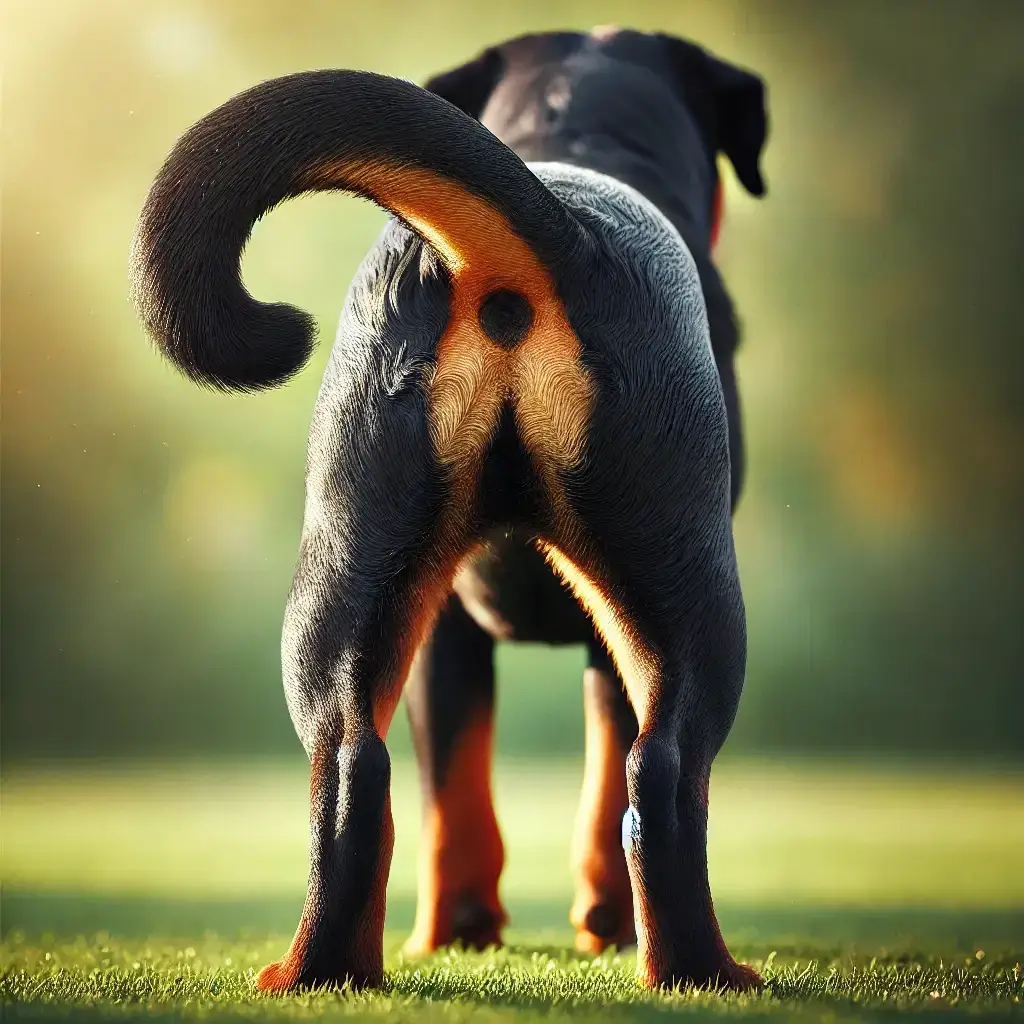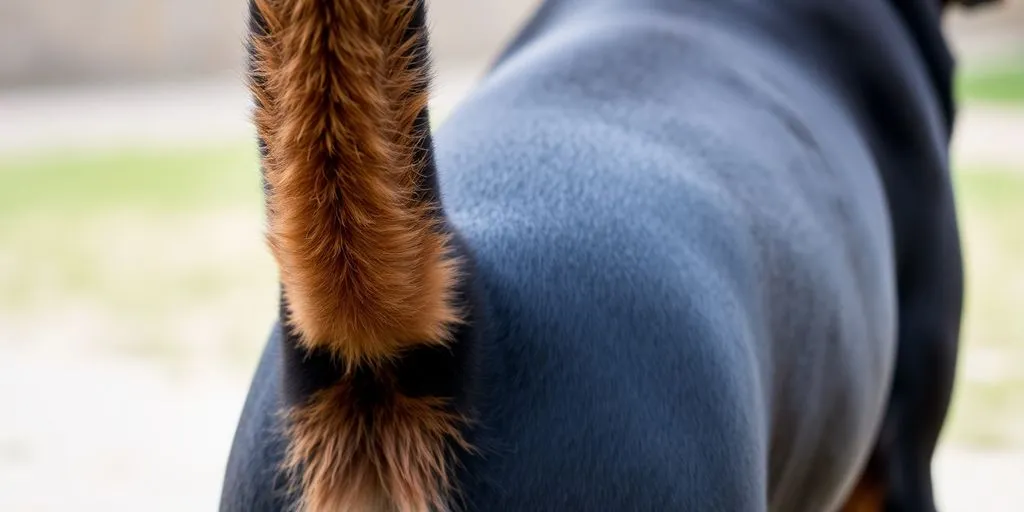Rottweiler Tail: To Dock or Keep?
Rottweilers are a prevalent breed known for their quality and dependability. Be that as it may, one point that sparkles many wrangles about is their tails. Numerous Rottweilers are seen with docked tails, but this hone raises questions approximately the breed’s normal characteristics and well-being. In this article, we are going to investigate the importance of Rottweiler tails, the history behind tail docking, and the progressing discourses encompassing this issue.
Key Takeaways
- Rottweilers are normally born with tails, but numerous are docked for tasteful reasons.
- Tail docking was verifiably done to secure working pooches from harm.
- The American Pet Hotel Club has particular benchmarks that regularly require docked tails for appearance purposes.
- There’s a developing development against tail docking, with numerous supporting for common tails.
- Rottweilers with tails can communicate way better and keep up way better balance than those without a tail.
Exploring the characteristic feature of a Rottweiler’s tail

Life Systems of a Rottweiler’s Tail
Rottweiler puppies, often referred to as “rottie pups,” are now being born and raised with their tails fully intact. The shift reflects a broader cultural movement away from cosmetic procedures for animals, as numerous veterinarians recommend against tail docking unless there is a compelling reason.
Rottweilers are born with full tails, similar to numerous other dog breeds. dog breeds. canine breeds. Their tails are regularly solid and solid, permitting a run of developments. The tail is made up of a few vertebrae, secured in skin and hide, which makes a difference in adjustment and communication.
Behavioral Importance of the Tail
The tail plays a significant part in a Rottweiler’s behavior. It can show different feelings, such as:
- Joy: A swaying tail regularly appears fervor.
- Hostility: A firm, raised tail can flag caution.
- Accommodation: A brought-down tail may show a tame position.
Communication Through Tail Development
Rottweilers utilize their tails to communicate with both people and other dogs, often seen wagging in excitement. Here are a few key focuses:
- Swaying: Demonstrates delight or energy.
- Stillness: Can cruel the dog is alarmed or centered.
- Tucked: Often shows fear or uneasiness.
The tail isn’t a fair body portion; it could be a crucial apparatus for a Rottweiler to specify its sentiments and intentions. Understanding these signals can improve the bond between you and your puppy.
History and Reasons for Tail Docking in Rottweilers
Beginnings of Tail Docking
Tail docking features a long history, dating back to antiquated times. Initially, it was accepted that docking a dog’s tail may protect it from rabies, an infection that caused fear among individuals. Numerous proprietors thought that a shorter tail would anticipate wounds whereas the puppy was working, particularly in thick zones where tails may get caught.
Useful Reasons for Docking
Over time, the reasons for tail docking advanced. Here are a few useful reasons:
- Damage Avoidance: Pooches working in areas or grouping cattle were at risk of tail wounds.
- Security: A docked tail would not get caught in gear or amid battles.
- Work Effectiveness A shorter tail was thought to assist dogs in performing errands without obstruction, but many now prefer a rottweiler with a tail for better communication.
Stylish and Appealing Purposes
In present-day times, tail docking has moved more towards aesthetics. Numerous pooches appear to require Rottweilers to have docked tails to meet breed guidelines. This has driven a recognition that docked tails are more alluring. Be that as it may, this hone has started talks about the need and morals of docking, particularly since numerous Rottweilers can flourish with their normal tails.
Rottweilers with Common Tails in Competitions

Breed Measures and Controls
In later a long time, there has been a move in how Rottweilers are seen in competitions. Numerous organizations are presently permitting Rottweilers with characteristic tails to compete. This alteration is noteworthy since it reflects a developing acknowledgment of the breed’s characteristic appearance. The American Kennel Club (AKC) has customarily favored docked tails, but this could be changing as more individuals advocate for normal tails.
Changing Patterns in Pooch Appearance
The drift of the pooch appears to be advancing.
Here are a few key focuses:
- Expanded mindfulness about the health and communication benefits of normal tails.
- Organizations like the Rottweiler Club of North America presently require tails for competition.
- Numerous judges are being taught the significance of normal tails in assessing Rottweilers.
Victory Stories of Natural-Tailed Rottweilers
Natural-tailed Rottweilers are making their mark in competitions.
A few striking victories include:
- Rottweilers winning titles appears to acknowledge that a rottweiler with a tail has advantages in competitions.
- Expanded cooperation of Rottweilers with tails on different occasions.
- Positive criticism from judges who appreciate the breed’s common look.
- The acknowledgment of Rottweilers with characteristic tails in competitions may be a step towards grasping the breed’s genuine legacy.
Rottweiler Tail Docking: Docked or Natural
A Rottweiler’s tail is surgically trimmed during a surgery known as tail docking, usually when the puppy is only a few days old. Many owners appreciate a Rottweiler’s natural appearance, but some decide to dock their tail to keep it from “getting in the way” or as a breed standard.
There are more Rottweilers with natural tails because tail docking is prohibited in some areas. Every dog is different, whether they are docked or natural, and knowing this decision might make it easier to care for Rottweilers with or without tails.
Caring for a Rottweiler Tail

Preparation Tips
Taking care of your Rottweiler’s tail is critical for their general well-being. Here are a few tips:
- Normal brushing: This makes a difference expel the earth and freeing the hair.
- Check for wounds: Hunt for cuts or scraped areas, particularly if your pooch is dynamic.
- Showering: Clean the tail amid showers to keep it new and solid.
Anticipating Wounds
To keep your Rottweiler’s tail secure, consider these safety measures:
- Maintain a strategic distance from tight spaces: Guarantee your pooch has sufficient room to move without hitting its tail.
- Administer recess: Observe for harsh play that seems to lead to tail wounds.
- Utilize defensive adaptations: In the off chance that your dog is prone to wounds, consider employing a tail watch during play.
Recognizing Wellbeing Issues
Be mindful of signs that will demonstrate an issue with your Rottweiler’s tail:
- Swelling or redness: This might demonstrate a disease or damage.
- Over-the-top licking: If your canine is constantly licking its tail, it may be a sign of inconvenience.
- Alter in behaviorOn the off chance that your dog appears more bad-tempered or maintains a strategic distance from utilizing their tail, counsel a veterinary professional.
- Keep in mind: A sound tail is fundamental for your Rottweiler’s communication and adjustment. Taking care of it now can avoid issues down the line.
Upbeat Tail Disorder
Be cautious of upbeat tail disorder, where a swaying tail can lead to wounds from hitting difficult surfaces. Anticipate this by guaranteeing your puppy contains a secure space to sway their tail unreservedly.
Rottweilers are renowned for their intelligence and devotion. Many Rottweilers have historically had their tails docked soon after birth. This procedure is sometimes defended by owners and breeders as a way to avoid tail injuries, particularly in working dogs.
The Evolution of Rottweiler Tail Docking
- The Evolution of Rottweiler Tail Docking: Explore the historical reasons behind tail docking in Rottweilers and how perceptions have shifted over time.
- The Benefits of Keeping Rottweilers’ Natural Tails: A Look at Health and Behavior Discusses the advantages of allowing Rottweilers to retain their natural tails, focusing on health, communication, and social behavior.
- Understanding the Rottweiler’s Tail: Communication and Emotional Expression in Dogs Examine how a Rottweiler’s tail plays a crucial role in their communication and emotional expression, particularly in social interactions.
- Rottweiler Breeding Practices: The Shift Towards Natural Tails and Its Implications Analyze the changing practices in Rottweiler breeding, including the implications of breeding for natural tails on breed standards and health.
- A Comparative Study: Docked vs. Natural-Tailed Rottweilers in Working Environments Investigate the performance and adaptability of docked versus natural-tailed Rottweilers in various working roles, such as service or police dogs.
- Rottweiler Owners Speak Out: Personal Experiences with Docked and Natural Tailed Dogs Features testimonials from Rottweiler owners about their experiences with both docked and naturally-tailed Rottweilers, highlighting care, behavior, and training differences.
- The Role of Organizations like the AKC in Changing the Narrative of Rottweiler Tail Docking Explore how organizations like the American Kennel Club are influencing public perception and regulations regarding tail docking in Rottweilers.
- Training Rottweilers with Natural Tails: Tips and Techniques for Successful Behavior Management Provides practical training tips for Rottweiler owners with naturally-tailed dogs, emphasizing adaptability and understanding canine body language.
In fact, many Rottweilers with their natural tails exhibit a variety of expressive behaviors that improve their interactions with both humans and other dogs. As regulations surrounding tail docking become more stringent and even banned in certain areas, breeders are adjusting to these developments.
Conclusion
In conclusion, the talk about whether to dock a Rottweiler’s tail is complex and filled with contrasting suppositions. Whereas a few accept that docking is vital for security or aesthetics. Numerous specialists contend that clearing out a Rottweiler’s tail intaglio is way better for the dog’s well-being and communication.
Tails play a vital part in how mutts express their sentiments and keep up adjusting. As more individuals become mindful of the benefits of keeping a Rottweiler’s tail, we may see a move in demeanors. Ultimately, the choice ought to be made with the dog’s well-being in mind, guaranteeing that each Rottweiler can flourish and communicate successfully.
Frequently Asked Questions:
Yes, Rottweilers are born with tails, rather like most other pooches. The thought that they do not have tails comes from a practice called docking, where the tail is removed when they are puppies.
There are two reasons: one is for security when the pooches are utilized for work, and the other is for looks in pooch appearance. Numerous individuals have presently docked tails since the convention.
Yes, docking a tail can be difficult for puppies. Indeed, even though it is done when they are exceptionally youthful, it can still cause torment and lead to wellbeing issues afterward.
Within the U.S., tail docking is lawful, but in numerous other nations, it is prohibited or confined due to creature welfare concerns.
Yes, a few organizations presently permit Rottweilers with normal tails to compete, but numerous still require docked tails for sections.
A common tail makes a difference with adjustment and communication. Mutts utilize their tails to express sentiments, and having a tail permits them to communicate with other mutts and individuals.










